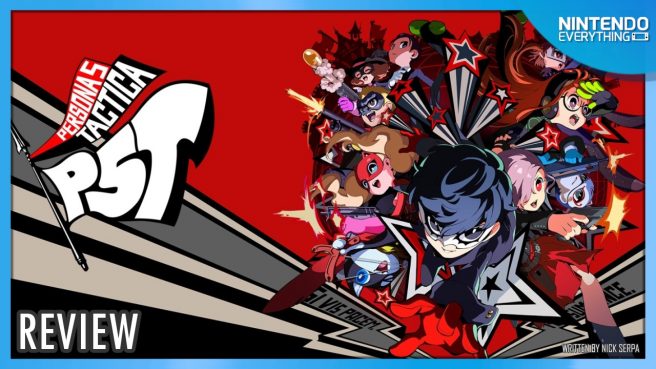[Review] Persona 5 Tactica
System: Switch
Release date: November 17, 2023
Developer: Atlus / P-Studio
Publisher: SEGA
From dancing and dungeon-crawling to road-trip adventuring, the Phantom Thieves have been awfully busy since the events of 2017’s Persona 5. Of course, with that game being one of the most acclaimed RPGs of the past decade, there’s been plenty of fan demand for spin-offs and sequels, some of which have been truly excellent. That said, even as a fan of Joker and company I was having a hard time getting excited about Persona 5 Tactica – 2021’s Persona 5 Strikers put such a nice bow on the characters’ stories that I didn’t expect a shift to grid-based strategy to shake things up enough. The good news is that it’s a solid tactics game that introduces some fun ideas to the series, even when its story beats don’t quite hit the mark.
Persona 5 Tactica wastes no time getting its teenage cast back into trouble. A mysterious door that appears in Café Leblanc whisks the gang away to an unexplored portion of the Metaverse called a Kingdom; this in of itself is strange to the Phantom Thieves, as previously they only could access the cognitive world by diving into Mementos or visiting an adult’s Palace. What they find beyond the door vaguely resembles a Renaissance European town, except it’s ruled by a sadistic being named Marie who has enslaved the populace to help her prepare for her wedding. Shortly after arriving, the Thieves encounter two new characters – a rebellion leader named Erina (who is a new playable party member in combat) and an amnesiac politician named Toshiro, who they promptly rescue and team up with. What follows is a straightforward tale of the Phantom Thieves trying to uncover the origins and purpose of this mysterious realm, as well as the backgrounds of their new accomplices.
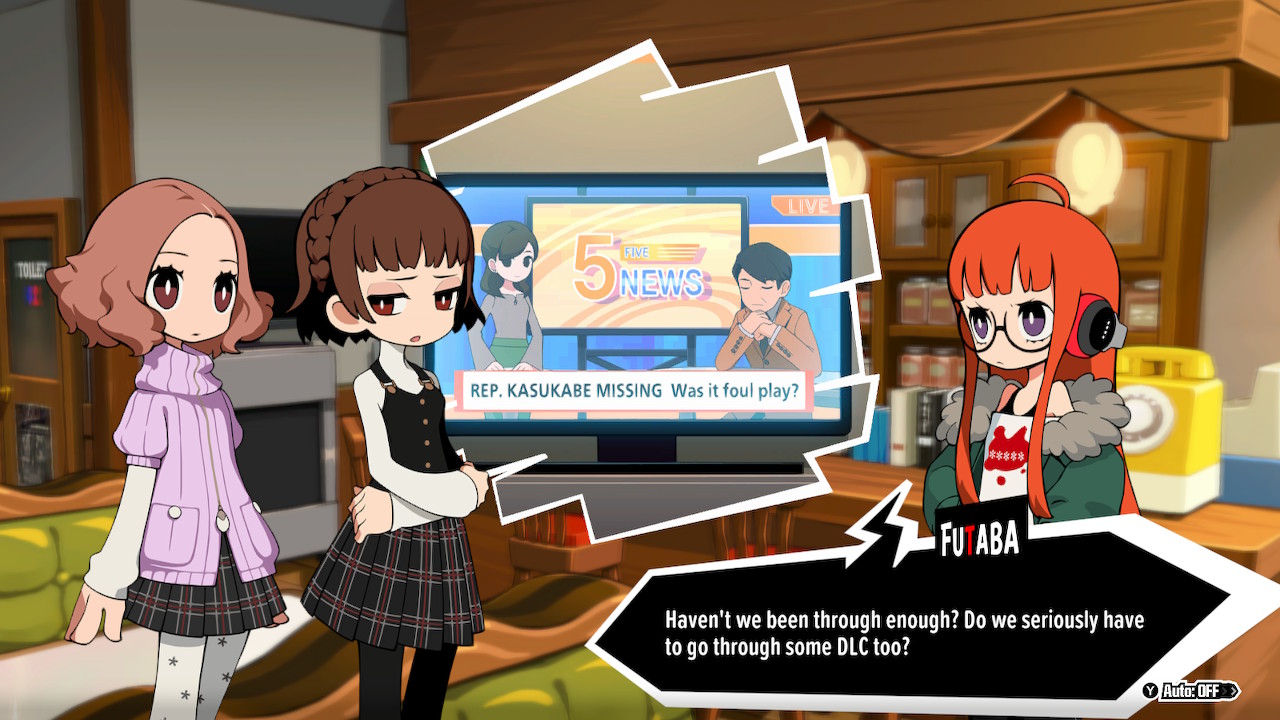
I was surprised to find that Persona 5 Tactica is just as much of a visual novel as it is a tactics game. Players will spend a lot of time watching character cutouts talk to each other as they prep for the next battle or poke fun at each other, so I was glad that their character portraits were at least somewhat animated and voice acted (at least for major scenes). I also appreciate that there are some accessibility features included like fast-forwarding and auto-playing text that prevented me from needing to mash through dialogue I didn’t care about or had already seen. I was a bit disappointed with the quality of the writing, which I found too basic to be interesting to read. I know the Phantom Thieves are a group of idealistic teenagers whose interactions are mostly lighthearted, but I can only hear Morgana quip about doing the right thing so many times before I start rolling my eyes. It’s corny stuff, even in main story scenes, but it all works a bit better in side-conversations. These are optional story moments that usually are simple banter sessions between characters, and while they’re inconsequential to the events of the plot, they contain occasional charming moments that will make fans of these characters smile.
Each of the four Kingdoms the Phantom Thieves visit in Persona 5 Tactica is ruled by an overbearing authority figure of mysterious origin, each with their own sub-plot that ties into the main narrative. I found the villains pretty cookie-cutter and toothless – all bark and no bite outside of a few key story moments I won’t spoil. Overall, despite how verbally amped up the core cast is about righting the wrongs of these oppressors, the stakes feel lower than usual for a Persona game and there’s no real thematic shakeup to get excited about. New cast members get more character development than the main cast, and their arcs are fine but ultimately left little impact on me. It’s a decent enough tale and events do ramp up towards the end, but it’s not an essential Persona story by any means.
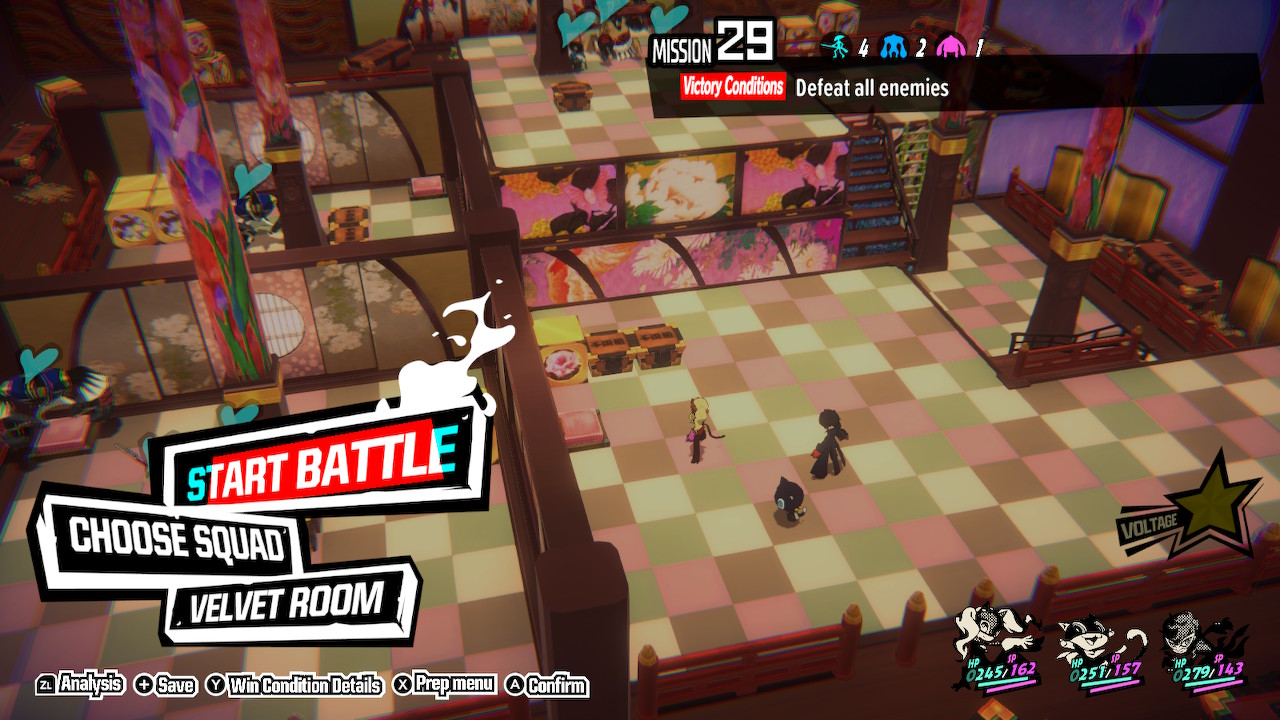
I feel like it’s important to mention that Persona 5 Tactica takes place during the events of Persona 5, and tells a non-canon (according to Atlus) story that assumes players have knowledge of the events of the main game. While I’m sure it’s possible to enjoy the raw gameplay of Tactica without diving into Persona 5, I wouldn’t recommend it – Persona 5 Tactica doesn’t spend very much time explaining who everyone is or what they’ve been up to, so players who enter blind might be pretty confused. (Note that we didn’t review the Paint Your Heart story DLC, which launched alongside the base game as a separate purchase).
The other half of the Persona 5 Tactica package is its combat. While exploring the Kingdoms, the Phantom Thieves will be thrust into battle after battle as they try and, for example, infiltrate a base or rescue a group of rebels. The format will be familiar to anyone who’s ever played a grid-based strategy game before – controlling each party member one-at-a-time, players have to move party members in and out of cover to get within range of an enemy, at which point they can select an offensive or defensive action from a menu. Pretty standard stuff, but Persona 5 Tactica smartly introduces new mechanics that adapt some – but not all – of the combat mechanics from Persona 5 to this different format.
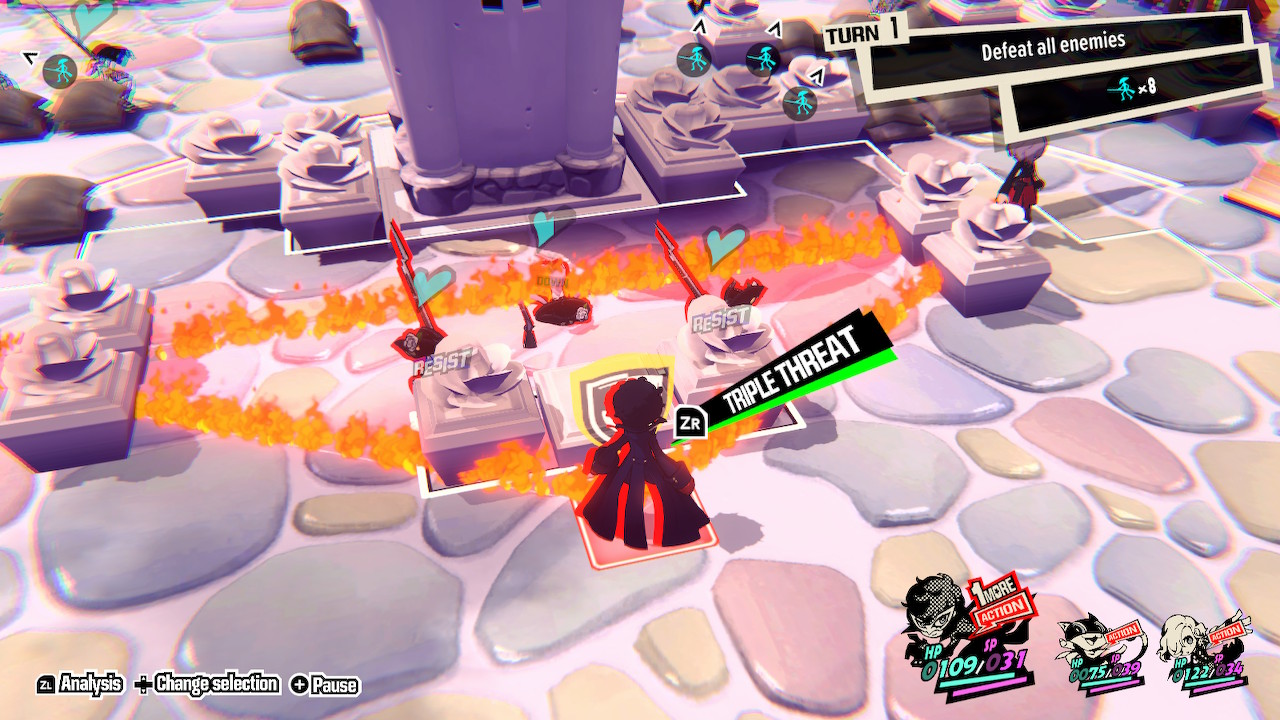
Almost every party member (excluding Erina) can wield not only their main Persona, but also a Sub-Persona, granting different abilities depending on which one is equipped. The twist this time around is that combat is less about hitting enemy weaknesses, and moreso about managing the position of party members and foes to open them up for major damage. If an enemy is in cover, it will be resistant to basically any attack, so it’s first necessary to force or lure them out. A Persona equipped with Garu or Garula, for example, can help sweep an enemy out of hiding, making attacks more effective. Other Personas might be able lure an enemy towards a party member or create a vortex on the map to pull them towards that spot. If you’re particularly clever, can you even push an enemy off a high platform and use a party member located on the ground to attack it in midair. While other types of Personas still can be useful as combat tools, your fire and ice attacks alone won’t be enough to make an impact if you can’t hit your enemies when they’re most vulnerable.
Manage to make an enemy vulnerable and the player can dish out a critical attack, which not only deals extra damage but also lets the player take another turn. This is a spin on the “One More” mechanic from Persona 5 and is immensely powerful. It’s totally possible to stack One More attacks and keep a turn going on and on, sprinting around the map and obliterating enemies. It’s really satisfying to pull off, and any time I saw the text prompt indicating I had opened up a foe for a critical hit, I knew I was setting myself up for a good run.
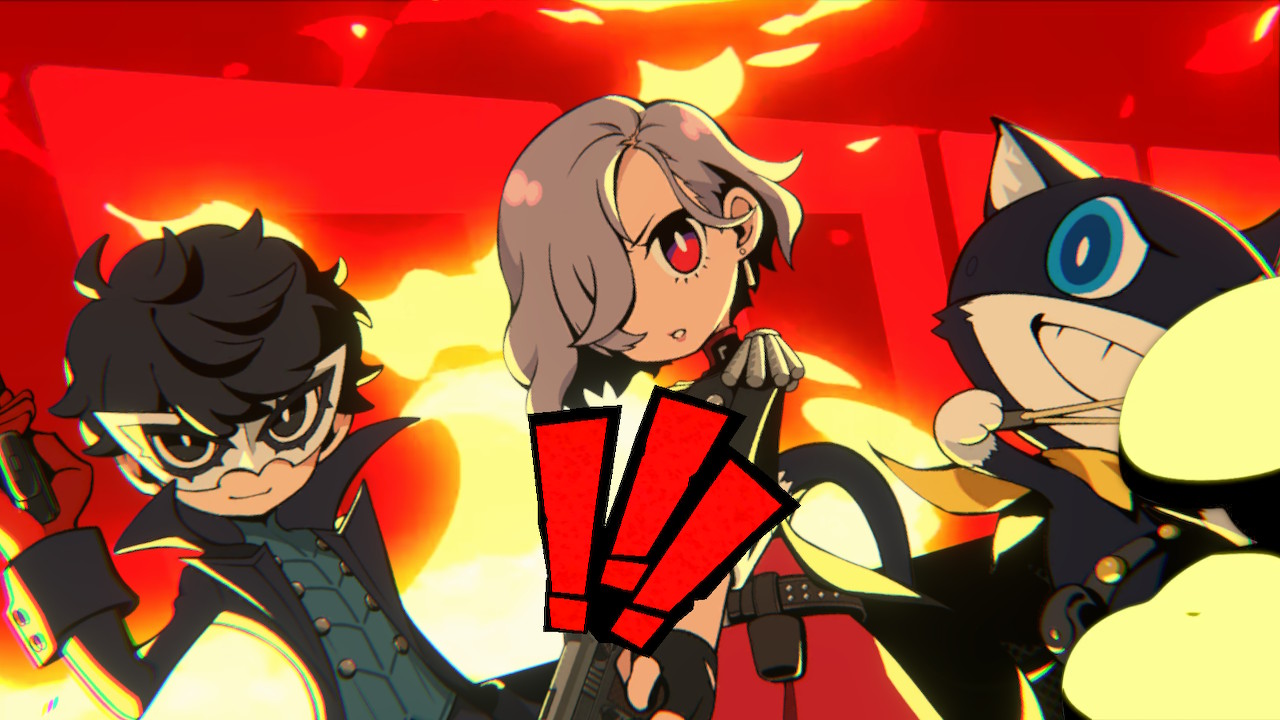
The other benefit of landing a One More is that it creates the possibility of executing an All-Out Attack. If the player can manage to arrange their three party members into a triangle formation, any baddies caught in the middle will take significant damage, usually enough to KO them completely. It comes alongside the trademark incredibly stylish black-and-red cutscene depicting party members rushing into a frenzy, and it always felt awesome to pull off. It all evolves into a really satisfying rhythm of pushing enemies out of hiding, downing them, and then trying to clear as many of them from the map as possible in a single fell swoop.
As fun as the core mechanics are, combat did start to fatigue me surprisingly quickly, for a few reasons. My first major gripe is that a lot of maps feel very similar to each other; not only are there only a few different environments that battles take place in, but many layouts feel very similar to each other to the point where I had to make sure I wasn’t replaying a stage I had already beaten. The maps also aren’t very dynamic – sometimes there are little things like explosive barrels scattered about, or doors that open and close, but it’s never particularly compelling. It really made me further appreciate just how much effort went into making the turn-based maps in 2022’s Mario + Rabbids Sparks of Hope feel consistently fresh; I don’t think the overall quality bar is nearly as high in Persona 5 Tactica. There’s also a real lack in enemy variety – even after 20 hours, I was still mostly encountering the same four or five enemy types, and so there was little need to change up my strategy.

The boss battles – infrequent as they are – do help make up for this repetition. Without getting into spoiler territory, I appreciated the fact that they try and change up some of the moment-to-moment mechanics in their own ways, necessitating a greater focus on adaptability for the player. Yes, bosses can be damage sponges and thus drag on for longer than otherwise necessary, but they remained highlights for me. Side quests can also be accepted between main missions, and these impose special challenges on the player like, for example, clearing all enemies in a single turn using a locked-down party. These were really fun to take on when I was hungry for a tougher experience.
The Persona series is known for the high quality of its music, and while the soundtrack in Persona 5 Tactica is good, neither the variety of tracks nor the tracks themselves are as strong as other games. You’ll hear the same handful of battle tracks on loop ad nauseum, and will only get a change of pace when you advance to another Kingdom. I found myself turning down the volume after a while just so I wouldn’t be listening to the same thing over and over again. That said, if you like the music in Persona 5 you’ll almost certainly the returning instruments and new melodies in Tactica.
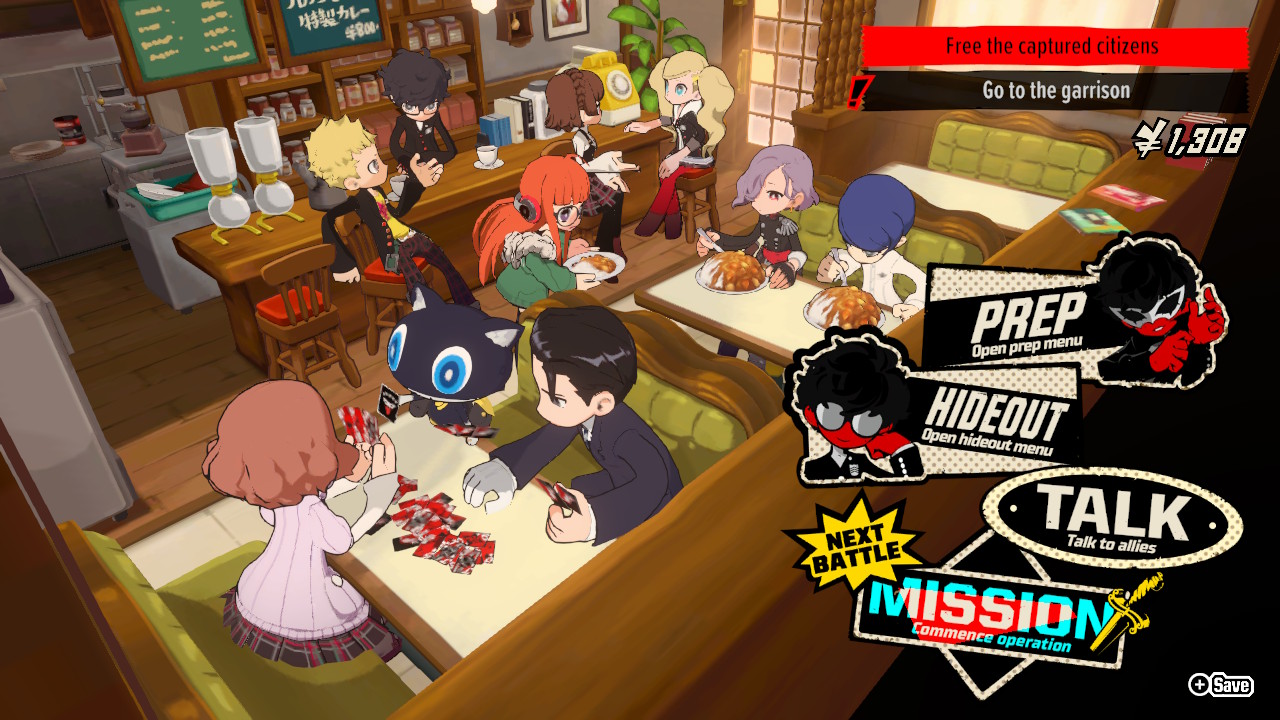
In between combat encounters, players will spend their free time at Café Leblanc – this generally acts as the home base for Phantom Thieves outside of battle. While it’s basically a glorified menu, I got a chuckle out of watching the Phantom Thieves kill time by playing cards, eating curry and hanging out. Visually, Leblanc looks a bit different this time around thanks to the chibi-esque art style of the 3D character models. I’m not the biggest fan of it, but it’s a good representation of the lighter tone of the spin-off compared to Persona 5.
Leblanc is also where players will prep and upgrade the Phantom Thieves between battles, and naturally there are plenty of options. Perhaps the most important aspects of party customization are locked in player skill trees where GP can be invested to unlock upgrades to health, attacks and more. The options are fairly standard for this type of game but there’s a decent amount of room for player expression. I, for example, generally opted not to upgrade my Persona skills to make them individually stronger, which would drain my limited pool of SP faster than I’d like, instead opting on a party build that was more balanced around passive stat boosts. I loved that I could respec at any time with no penalty, too, offering more chances to experiment.
The Velvet Room is where Persona Fusion happens, and it’s a more straightforward take on on how it functions in Persona 5. When fusing, Personas can only inherit one skill from their ancestors so there are more limits in place, but generally speaking there a ton of different Personas to create, and good incentive to do so as they can also affect the base stats of whatever party member is equipped. Later in the game, you can fuse Personas into new weapons too, avoiding the need to spend your limited funds at the in-game Weapon Shop if you’d prefer not to. Personas are handed out after almost every battle, so you’ll always have some spares in your stock to mess around with. Also, Lavenza has some really funny dialogue an animations in Persona 5 Tactica, so I always enjoyed visiting her to perform some Fusions – although the loading screen to get there became annoying eventually.
The Verdict

Persona 5 Tactica isn’t an essential experience – even for Persona 5 fans – but its (mostly) light and fanservice-rich story is a fun excuse for compelling turn-based tactics. While lacking some of the depth of genre peers, the game manages to adapt the overall rhythm of the mainline Persona 5 game into something well-suited for grid-based strategy, and the pace of battles is snappy and satisfying to the end. While more variety would have helped keep the game feeling fresh longer, plenty of room for optimizing both technique and party builds and will help keep players on their toes.
Persona 5 Tactica copy provided by the publisher for the purposes of this review.
